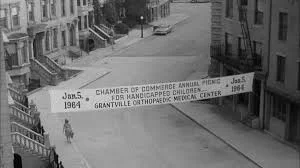 |
| Richard Loo, Richard Monahan, and James Edwards in The Steel Helmet |
Sgt. Zack: Gene Evans
Pvt. Bronte: Robert Hutton
Lt. Driscoll: Steve Brodie
Cpl. Thompson: James Edwards
Sgt. Tanaka: Richard Loo
Joe: Sid Melton
Pvt. Baldy: Richard Monahan
Short Round: William Chun
The Red: Harold Fung
Director: Samuel Fuller
Screenplay: Samuel Fuller
Cinematography: Ernest Miller
Art direction: Theobold Holsopple
Film editing: Philip Cahn
Music: Paul Dunlap
We tend to think of the American civil rights movement as beginning on May 17, 1954, when the United States Supreme Court handed down the Brown v. Board of Education decision, declaring segregated schools illegal. But it's worth giving credit for the climate change that led to the decision to many precursors, including, of all things, the Hollywood film industry. Timid and tepid as "race-conscious" films like
Pinky (Elia Kazan, 1949) and
No Way Out (Joseph L. Mankiewicz, 1950) seem to us today, they were made by major directors, and showed a willingness to confront American racial conflict that would have been unwelcome a decade earlier. But maybe no movie suggests how profound that change in attitudes would become than Samuel Fuller's
The Steel Helmet, an unabashedly low-budget movie, shot in ten days, by a director regarded as second-string and a producer, Robert L. Lippert, known as "The Quickie King." It's a war movie with all the clichés of the genre, including the old familiar melting-pot cast of soldiers, except that in the war movies of the 1940s, made as morale boosters, the ingredients in the melting pot were mostly of European origins: Irishmen, Italians, Swedes, and so on, and a mix of Catholics, Protestants, and Jews. But Fuller's Korean War-era melting pot added an African-American medic and a Japanese-American sergeant to the mix. And it directly confronted the issue of racial discrimination when a North Korean POW taunts both men about their lives back home. Granted, the response of the medic, Cpl. Thompson, is a little disappointing, essentially a these-things-take-time shrug, but the fact that a black actor, James Edwards, has been included in the cast, and on a more-or-less equal footing -- he sasses back when sassed -- is extraordinary. And the POW's mention of the American internment camps for Japanese-Americans is one of the first references in a movie to what was then still a little-known blot on American justice. Because Fuller is just so damn good at telling a story and keeping the action hot, all of this goes by without feeling like a blatant attempt to stir the liberal conscience. If his characters are stereotypical -- Sgt. Zack isn't much more than the hard-bitten, cigar-chomping old hand, and Lt. Driscoll is the greenhorn officer a bit out of his depth -- Fuller still knows how to put them into play. He works miracles with locations that are clearly not Korean or even Asian -- they were shot in Griffith Park in L.A. -- and with studio sets -- a door in the Buddhist temple slams and the wall visibly shakes. It's doubtful that
The Steel Helmet converted any racists in the audience, but the fact that it must have got them into the theater at all -- it grossed more than $6 million on a budget of a little over $100 thousand -- is a tribute to Fuller.
















